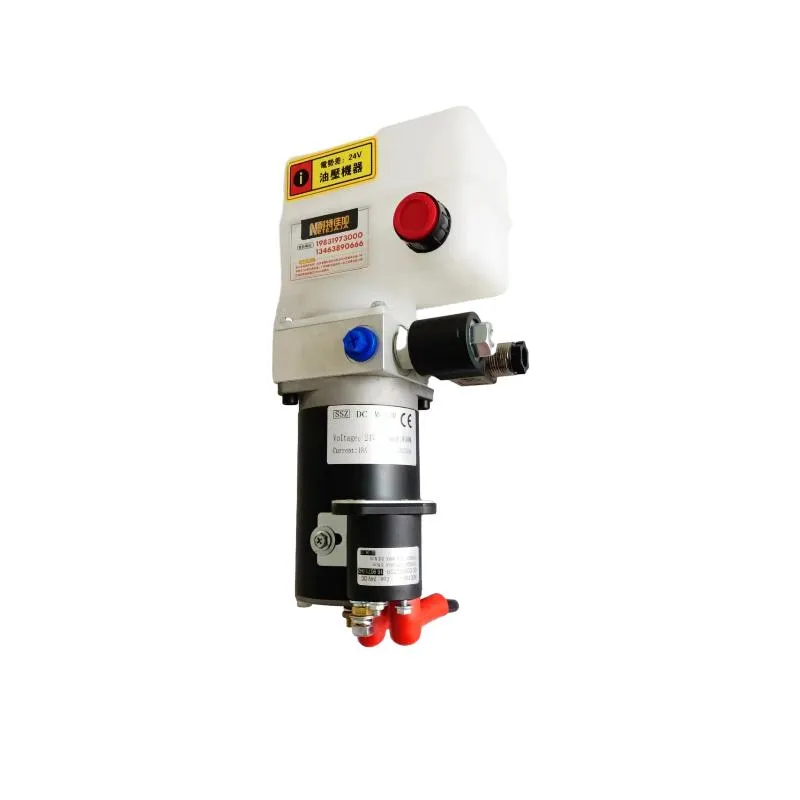Aug . 05, 2024 23:53 Back to list
Hydraulic Cylinder Manufacturer Specializing in Tailplate Applications and Custom Solutions for Various Industries
The Essence of Tailplate Hydraulic Cylinder Manufacturing
In the realm of heavy machinery and industrial applications, the role of hydraulic cylinders cannot be overstated. Among these, tailplate hydraulic cylinders serve a specialized function that is vital for the operation of various equipment, particularly in sectors such as construction, manufacturing, and logistics. Tailplate hydraulic cylinders are designed for the precise movement and positioning of tailplates in different machines, making their quality and reliability paramount for operational efficiency.
Understanding Tailplate Hydraulic Cylinders
Tailplate hydraulic cylinders are integral components that facilitate the actuation and movement of a tailplate—a flat surface that can be raised or lowered to perform specific functions. This can include loading and unloading materials in transportation applications, providing a stable platform for operations, or controlling the descent of dumps in construction vehicles. The hydraulic cylinders operate on the principle of fluid mechanics, using pressurized hydraulic fluid to create motion. This mechanical efficiency is what allows heavy loads to be lifted with relative ease and precision.
The Manufacturing Process
Manufacturing tailplate hydraulic cylinders is a meticulous process that combines advanced engineering, precision machining, and quality control. The primary manufacturing steps include design, material selection, machining, assembly, and testing.
1. Design The process often begins with careful engineering design, where parameters such as load capacity, stroke length, and pressure ratings are determined. Modern CAD (Computer-Aided Design) software enables designers to create accurate models that can be analyzed and optimized.
2. Material Selection Selecting the right material is crucial for durability and performance. High-strength steel alloys are typically chosen for their robustness and ability to withstand the high pressures experienced during operation. Additionally, surface treatments might be applied to resist corrosion and wear.
tailplate hydraulic cylinder factory

3. Machining The components of the hydraulic cylinder, including the barrel, rod, piston, and seals, are machined to tight tolerances to ensure smooth operation and longevity. Precision machining tools and techniques are employed to achieve the exact specifications required for each part.
4. Assembly Once all parts are manufactured, they are assembled in a controlled environment to maintain cleanliness and prevent contamination. This step requires skilled technicians to ensure that all seals and fittings are correctly installed to prevent leaks.
5. Testing Quality assurance is critical. Each hydraulic cylinder undergoes rigorous testing for pressure, leak integrity, and operational efficiency. This process guarantees that the finished product meets industry standards and customer specifications.
Advancements in Technology
Recent advancements in technology have significantly influenced the manufacturing of tailplate hydraulic cylinders. The integration of automation and robotics has increased efficiency in the machining and assembly processes. Furthermore, innovative materials and coatings enhance performance and extend the lifecycle of hydraulic cylinders, reducing downtime and maintenance costs.
Additionally, the advent of IoT (Internet of Things) technologies allows for real-time monitoring of cylinder performance, enabling predictive maintenance and reducing unexpected failures. This shift to smart technologies illustrates the ongoing evolution in the industry, enhancing both productivity and safety.
Conclusion
The production of tailplate hydraulic cylinders is a complex but essential process that impacts various industries reliant on heavy machinery. As technology continues to advance and industrial demands grow, the manufacturing of hydraulic cylinders will undoubtedly evolve, improving efficiency, reliability, and performance. Understanding this manufacturing process highlights its importance not only in the industrial sector but also in supporting the infrastructure and logistics that keep economies moving forward.
-
1.5 Ton Flipping Oil Cylinder 70/82-40-217-720 - Hebei Shenghan | Hydraulic Solutions, Customization
NewsSep.01,2025
-
1.5 Ton Flipping Oil Cylinder 70/82-40-217-720 - Hebei Shenghan Hydraulic Machinery Co., Ltd.|Precision Engineering&Customizable Hydraulic Components
NewsSep.01,2025
-
1.5 Ton Flipping Oil Cylinder 70/82-40-217-720 - Hebei Shenghan
NewsSep.01,2025
-
1.5 Ton Flipping Oil Cylinder 70/82-40-217-720-Hebei Shenghan Hydraulic Machinery Co., Ltd.|Customization, Chrome-Plated Piston Rod, Indel Seals
NewsSep.01,2025
-
1.5 Ton Flipping Oil Cylinder 70/82-40-217-720-Hebei Shenghan|Customizable Hydraulic Cylinder&Durable Oil Cylinder
NewsSep.01,2025
-
1.5 Ton Flipping Oil Cylinder 70/82-40-217-720 | Hebei Shenghan
NewsSep.01,2025
